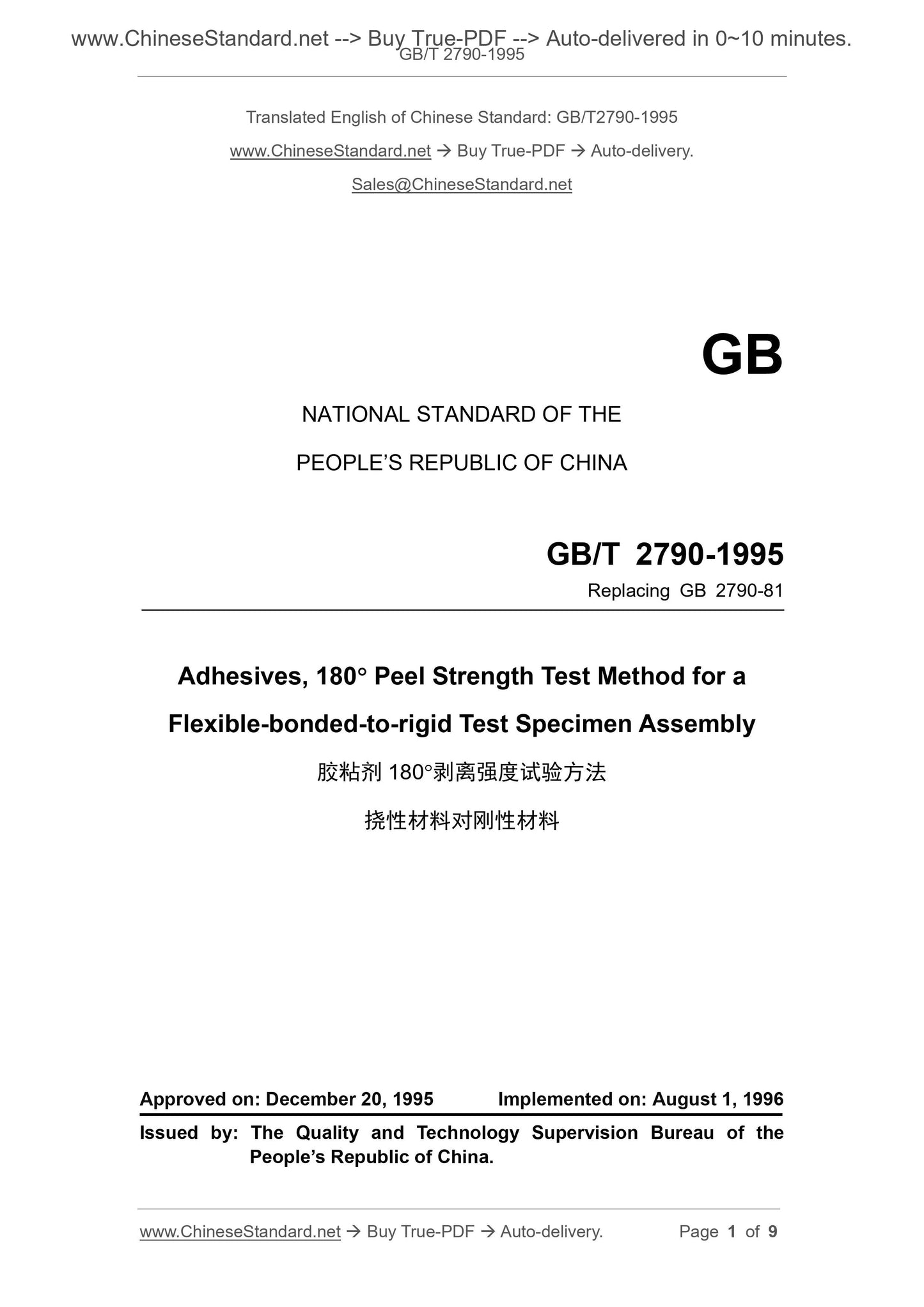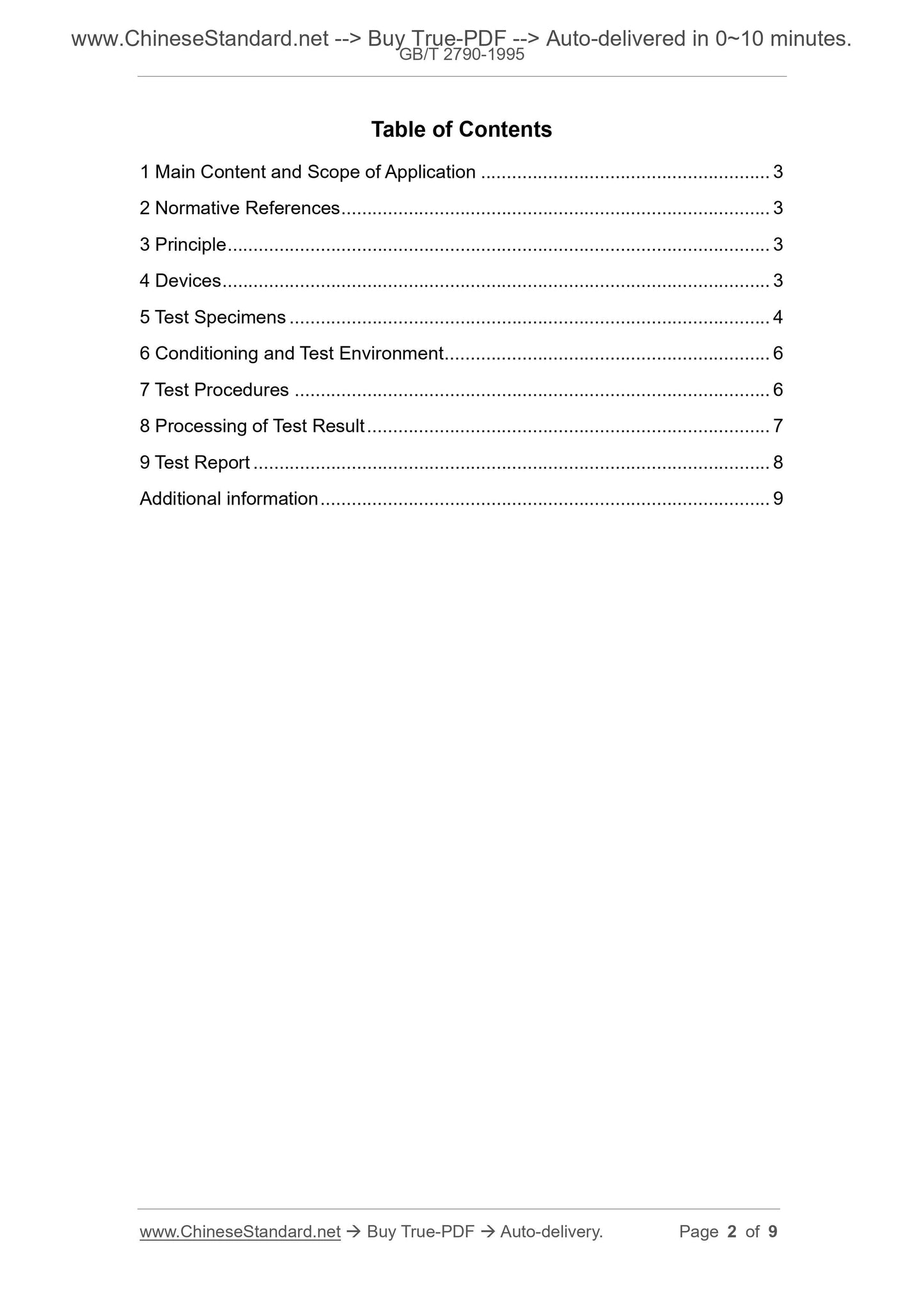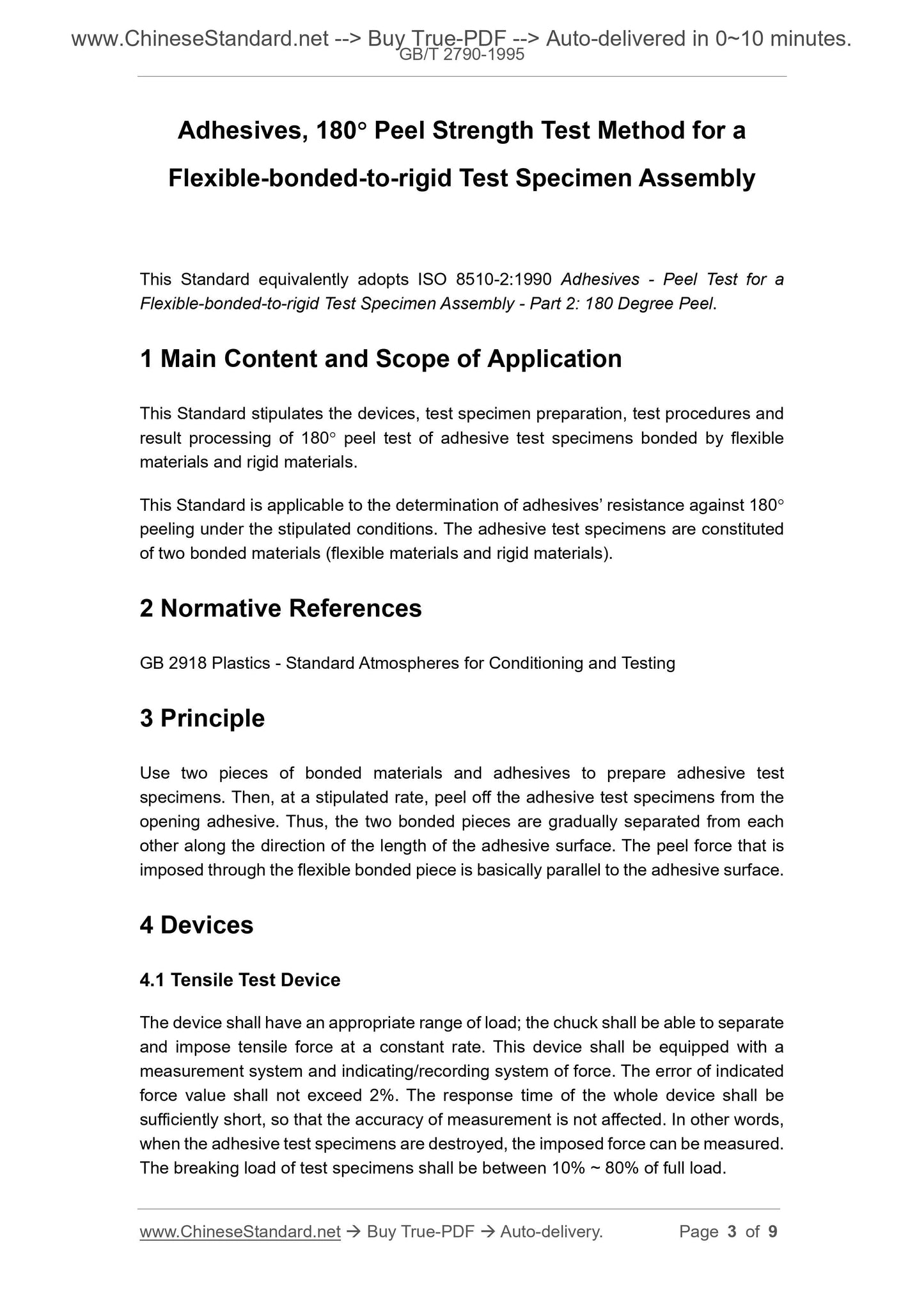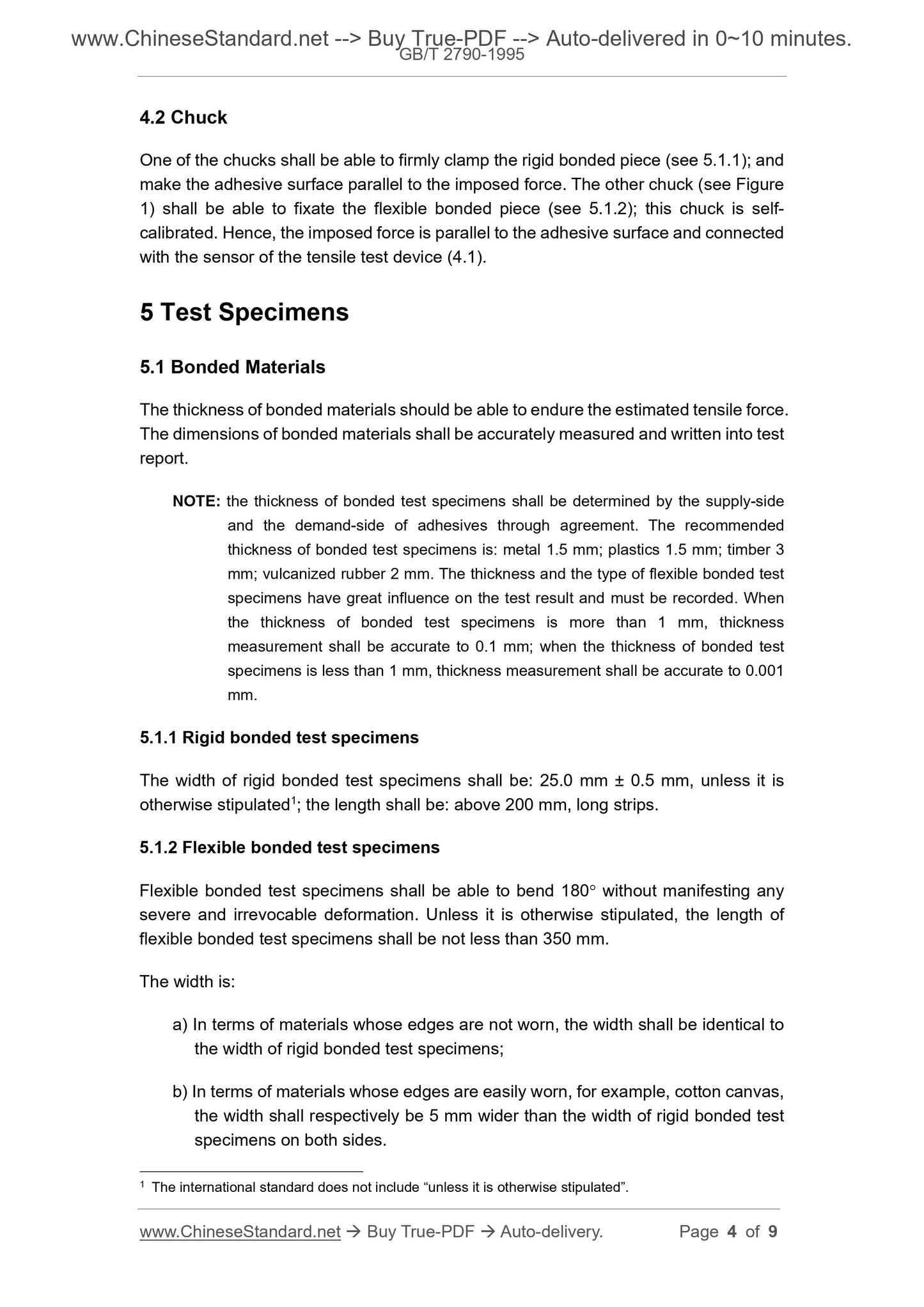1
/
of
5
www.ChineseStandard.us -- Field Test Asia Pte. Ltd.
GB/T 2790-1995 English PDF (GB/T2790-1995)
GB/T 2790-1995 English PDF (GB/T2790-1995)
Regular price
$70.00
Regular price
Sale price
$70.00
Unit price
/
per
Shipping calculated at checkout.
Couldn't load pickup availability
GB/T 2790-1995: Adhesives, 180-degree peel strength test method for a flexible-bonded-to-rigid test specimen assembly
Delivery: 9 seconds. Download (and Email) true-PDF + Invoice.Get Quotation: Click GB/T 2790-1995 (Self-service in 1-minute)
Newer / historical versions: GB/T 2790-1995
Preview True-PDF
Scope
This Standard stipulates the devices, test specimen preparation, test procedures andresult processing of 180 peel test of adhesive test specimens bonded by flexible
materials and rigid materials.
This Standard is applicable to the determination of adhesives’ resistance against 180
peeling under the stipulated conditions. The adhesive test specimens are constituted
of two bonded materials (flexible materials and rigid materials).
Basic Data
| Standard ID | GB/T 2790-1995 (GB/T2790-1995) |
| Description (Translated English) | Adhesives, 180-degreepeel strength test method for a flexible-bonded-to-rigid test specimen assembly |
| Sector / Industry | National Standard (Recommended) |
| Classification of Chinese Standard | G38 |
| Classification of International Standard | 83.18 |
| Word Count Estimation | 4,454 |
| Date of Issue | 12/20/1995 |
| Date of Implementation | 8/1/1996 |
| Older Standard (superseded by this standard) | GB 2790-1981 |
| Quoted Standard | GB 2918 |
| Adopted Standard | ISO 8510-2-1990, MOD |
| Issuing agency(ies) | State Bureau of Technical Supervision |
| Summary | This standard specifies the 180 �� peel test device flexible material and rigid plastic material bonded to pick the sample, specimen preparation, test procedures and results processing. This standard applies to the determination of the two is sticky material (one is a flexible material, the other is a rigid material) consisting of glued specimens under specified conditions, resistance to 180 �� peel adhesive properties. |
Share









